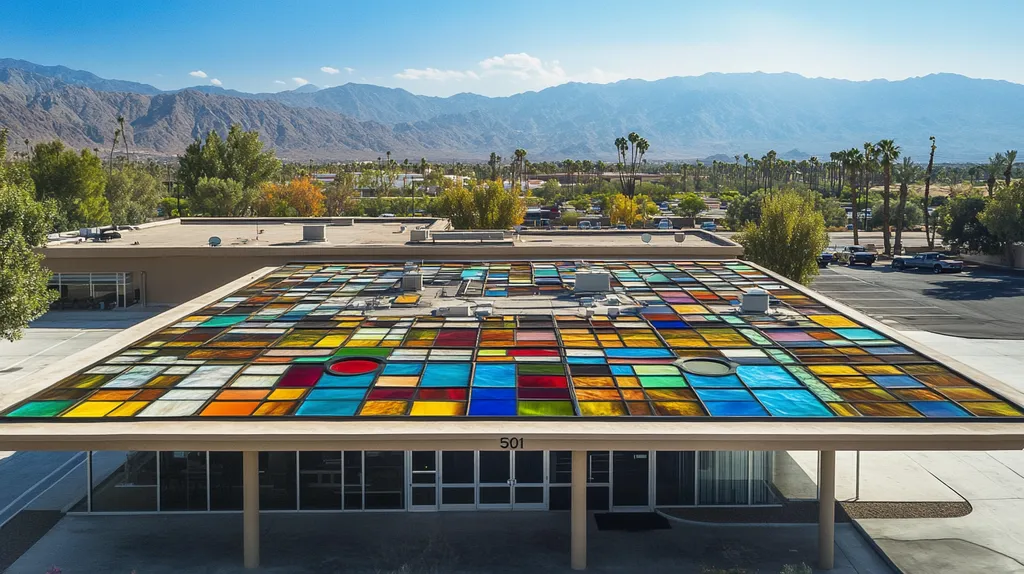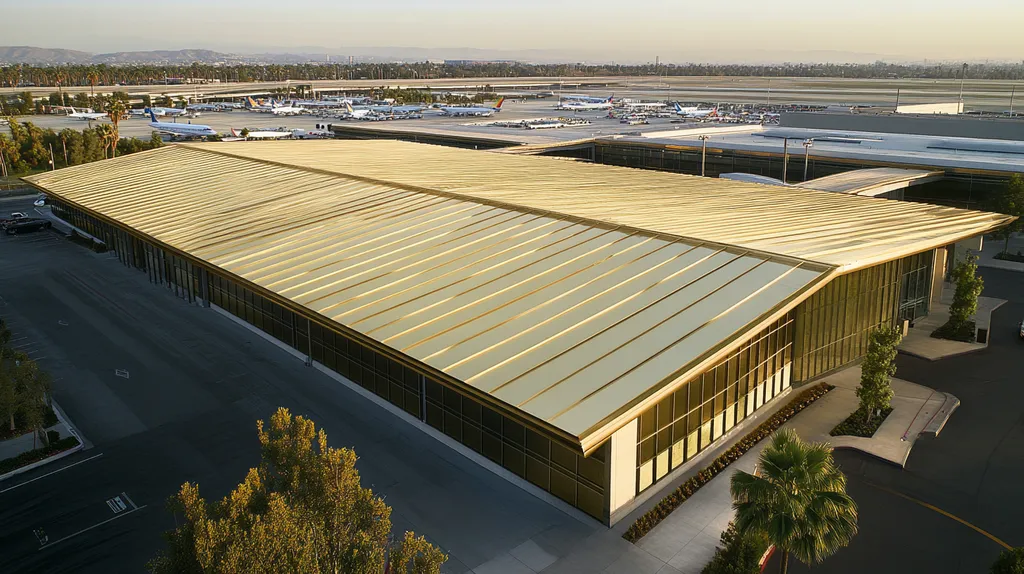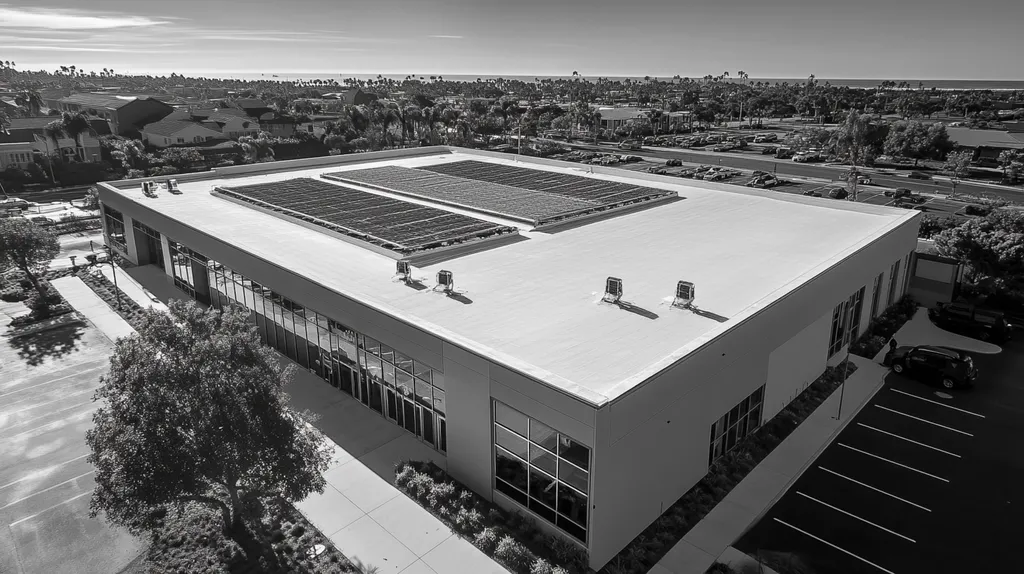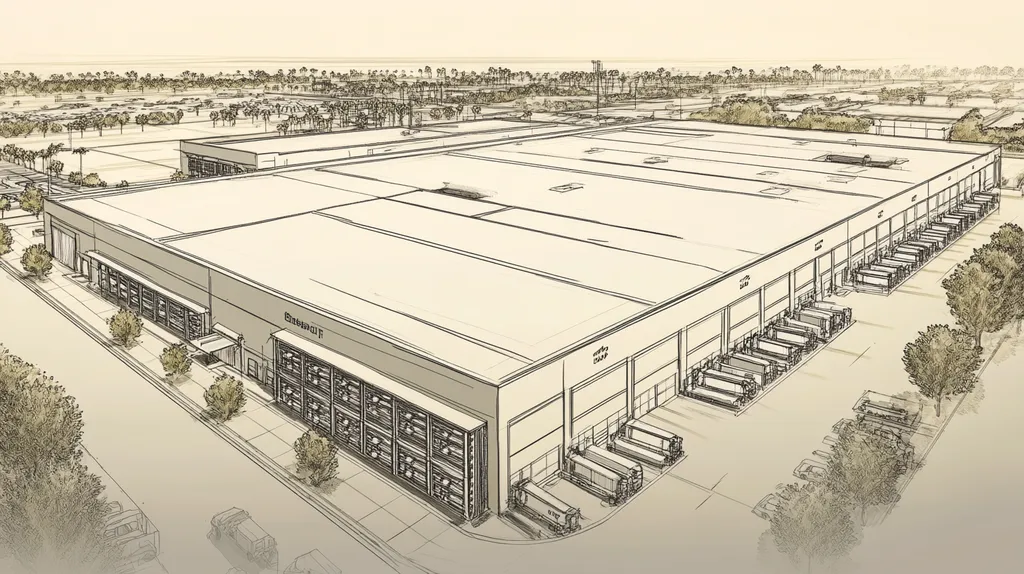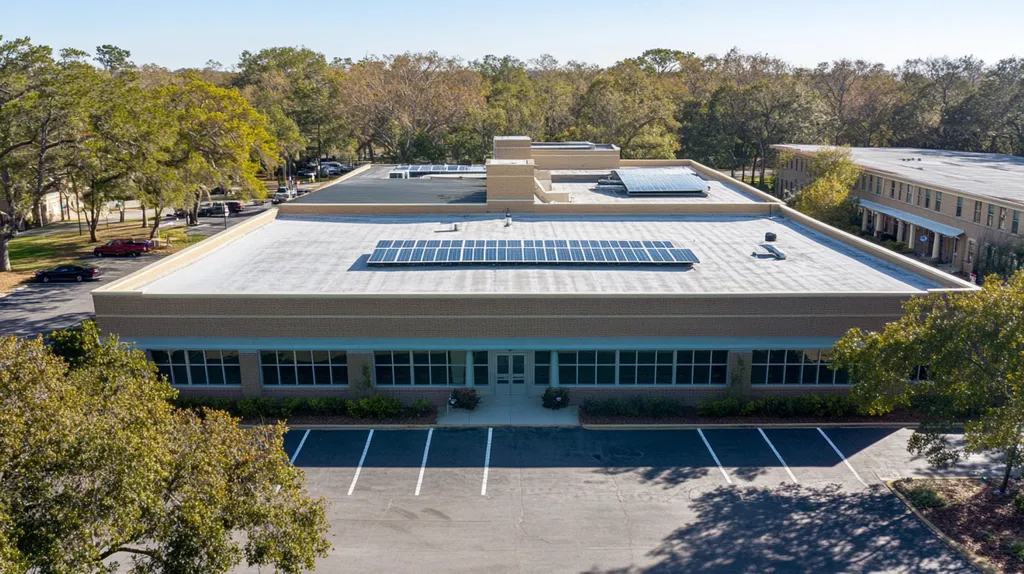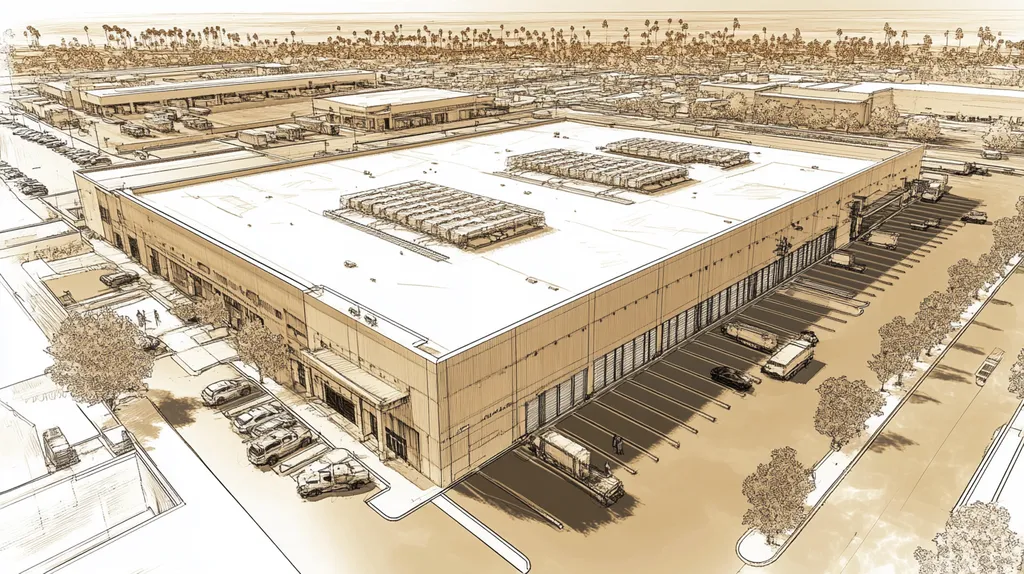In the commercial roofing industry, improper coating applications cost property owners over $300 million annually in premature roof failures and repairs. Understanding when to avoid roof coatings is as crucial as knowing when to apply them.
While coatings can extend roof life by up to 15 years when properly applied, choosing the wrong conditions or materials can accelerate deterioration and lead to catastrophic failures.
This comprehensive guide examines the critical factors that determine coating success, common misconceptions that lead to failures, and evidence-based approaches for making informed roofing decisions.
SECTION 1: COMMON MISCONCEPTIONS
Misunderstandings about roof coatings in commercial roofing can lead to serious financial consequences. Property owners often view coatings as mere paint or temporary remedies. These faulty beliefs can result in poor choices that compromise the integrity of roofs, leading to increased vulnerability and unexpected repairs. Clarifying these misconceptions is essential for making informed decisions that safeguard investments and prolong roof life.
Coatings Are Just Paint
A widely held myth is that roof coatings are simply a type of paint. This misconception reduces a sophisticated solution to a trivial cosmetic upgrade. Unlike conventional paint, roof coatings are specially formulated materials that create a protective barrier, reflecting harmful UV rays and reducing thermal shock on roofing surfaces.
For example, reflective roof coatings can cut energy costs by as much as 20%, significantly improving overall building efficiency. These coatings exhibit superior adhesion and durability compared to standard paints. Recognizing these differences is vital for property owners looking to make sound investments.
Moreover, when applied correctly, coatings can extend the lifespan of existing roofs. Underestimating the advantages of coatings can lead to missed opportunities for enhanced roof protection and energy savings.
This misconception can also discourage essential maintenance practices. Skimping on quality by opting for cheaper products can result in more frequent repairs and replacements, ultimately costing more in the long run.
Only for Old or Damaged Roofs
Another common misconception is that coatings are only effective on aging or damaged roofs. While they excel at revitalizing older systems, new roofs can also benefit significantly from coatings. Applying a high-quality coating to a new roof acts as a preventive measure against environmental stresses.
For instance, a newly installed roof treated with a robust coating can boost its durability and energy efficiency right from the start. This proactive measure may extend a roof’s life considerably, lowering overall lifecycle expenses.
Research indicates that applying a protective coating to a new roof can effectively delay wear and damage caused by weather, pollutants, and UV radiation. Dismissing coatings during new installations can mean overlooking valuable long-term advantages offered by modern roofing technologies.
Ultimately, viewing coatings solely as solutions for existing roof issues neglects their role as integral components of effective building maintenance. Recognizing this can transform how property managers approach roofing projects, leading to smarter, more resilient choices.
Temporary Fix Myth
Many commercial property owners are misled by the belief that roof coatings provide only a temporary solution. This mindset often results in neglect, leaving roofs without sustainable fixes. In contrast, when applied and maintained properly, roof coatings can significantly extend roof life and serviceability.
Studies reveal that high-quality coatings can add 10 to 20 years to an existing roof’s lifespan, debunking the notion of short-term efficacy. These coatings create a seamless membrane, safeguarding against water intrusion and UV damage, both critical for long-term roof performance.
Incorporating regular maintenance and timely re-coating further amplifies these benefits, cementing roof coatings as a sustainable choice. Adhering to the temporary fix myth may push property owners toward ineffective solutions, ultimately driving up repair costs.
By redefining the narrative around coatings as long-term investments rather than quick fixes, property managers can develop more strategic maintenance approaches that enhance overall building performance and reduce total cost of ownership.
SECTION 2: PRACTICAL IMPLICATIONS
The choice to apply coatings on a roof can significantly impact a building’s durability and operational costs. Research shows that a roof lacking proper coatings can experience a 20-30% decrease in lifespan compared to one that is well-maintained. Therefore, it’s crucial for property owners to understand when to avoid coatings to protect their investments and maximize roof performance for the long term.
Impact on Roof Longevity
While roof coatings are known for extending longevity, applying them under inappropriate conditions can backfire. For instance, if a coating is applied in high humidity or on a wet surface, it may trap moisture underneath, leading to mold and rapid deterioration.
One notable example involves a facility that opted for a reflective coating during a rainy season. Instead of achieving the expected ten-year lifespan, the roof suffered accelerated degradation, resulting in a complete replacement only three years later.
To avoid such costly mistakes, regular assessments before applying coatings are essential. Property owners should evaluate critical factors like current weather conditions and the roof’s existing integrity.
By ensuring that coatings are applied only in ideal scenarios, property managers can significantly enhance the roof’s lifespan and protect their financial investments.
Energy Efficiency and Costs
Energy efficiency remains a vital consideration for commercial property owners. Properly applied coatings can lower air conditioning demands, translating into considerable energy savings.
However, the wrong coating can impair energy performance. For example, a roof treated with an inappropriate reflective material may absorb heat instead of reflecting it, negating any intended cost savings.
Misjudged energy efficiency could lead to unforeseen expenses in cooling systems. Therefore, careful evaluations must be conducted to ensure that a selected coating truly enhances energy performance.
By focusing on suitable energy-efficient coatings, businesses can effectively reduce costs while ensuring a comfortable environment for occupants.
Maintenance and Upkeep Needs
While coating roofs may appear to be a simple solution, the maintenance requirements are critical and must not be overlooked. Coatings necessitate routine inspections and possible reapplications to ensure continued effectiveness.
A facility that neglects regular maintenance on its coated surface risks premature failure, leading to unplanned costs and disruptions. Proactive inspections can catch any signs of wear early, maintaining the coating’s performance.
Property owners also need to understand the specific upkeep needs associated with different types of coatings. Certain coatings might require specialized cleaning techniques or treatments to retain their advantages.
By implementing a comprehensive maintenance strategy, property managers can fully optimize the benefits of coatings while minimizing long-term operational interruptions.
SECTION 3: COST OF MISINFORMATION
The impact of misinformation regarding roof coatings can be both profound and costly for property owners. Misunderstandings can lead to the premature application of coatings or the neglect of necessary maintenance, resulting in significant financial pitfalls. Studies show that up to 30% of total roofing costs can arise directly from incorrect decisions, which not only waste resources but also disrupt building operations. Addressing these misconceptions is critical for effective long-term asset management and environmental responsibility.
Financial Consequences of Misconceptions
Property owners can face severe financial repercussions when relying on misleading information about roof coatings. Misjudging the right coating for a specific roof can bring about unexpected repair or replacement costs. For example, improperly applying an unsuitable coating may accelerate deterioration, necessitating more extensive repairs.
In advanced situations, the need for a complete roof replacement may arise, costing anywhere from $20,000 to $100,000 or more, depending on the roof’s size and intricacy. The initial cost savings claimed by coating applications can quickly vanish when significant repairs follow shortly after.
Moreover, misconceptions surrounding coatings can obstruct effective budgeting for necessary maintenance and operational planning. Funds intended for vital upkeep may end up being redirected to address urgent repair needs caused by misinformed choices. This financial burden can threaten the overall health of a business.
Ultimately, having access to accurate information can help property owners avoid unwanted expenses while ensuring the longevity and reliability of their roofs. Investing in credible sources and expert guidance is a wise decision.
Comparison to Full Roof Replacement
Many property owners mistakenly bypass a comparison between roof coatings and complete roof replacements. An ill-timed or poorly executed coating application can foster a false sense of security, leading to the neglect of underlying issues. Undetected damage may worsen over time, requiring more costly solutions in the future.
Some owners presume that applying a coating will resolve leaks without tackling the root issues. This often results in serious structural damage and a reduced lifespan for the roofing system. If coatings fail prematurely, property owners may face the need for entire replacements sooner than they anticipated.
While full roof replacements can be daunting costs, they often provide a more dependable solution than misunderstood or misapplied coatings. A thorough understanding of the true costs associated with both options can drastically shift decision-making. When replacements extend a roof’s lifespan by 15-20 years, they emerge as a smarter investment.
Thus, making an informed choice between coatings and full replacements demands careful consideration of all available options. Property owners should prioritize long-term advantages rather than quick, short-term gains.
Environmental Impact of Misguided Choices
Misinformation about roof coatings does not merely impact financial aspects; it also carries significant environmental implications. Improperly applied coatings can lead to increased waste and environmental harm. When coatings fail prematurely, they contribute unnecessary waste to landfills.
Additionally, neglected roofing systems do not just elevate environmental burden but also compromise the efficiency of the entire building. Issues such as increased energy consumption push buildings to use more resources, raising operational costs while contributing to a higher carbon footprint.
Many coatings are formulated with energy efficiency in mind. However, if they are inappropriately applied, these coatings can fail to meet their sustainability objectives. Misunderstandings can result in energy loss scenarios that counteract the intended eco-friendly benefits.
In summary, the connection between roofing decisions and environmental responsibility is significant. Making informed choices can simultaneously promote financial well-being and a commitment to sustainable practices in the industry.
SECTION 4: REALITY CHECK
Maintaining roofs efficiently and cost-effectively is essential for property owners and facility managers. With an abundance of roofing options, including coatings, understanding not only their benefits but also the prerequisites for their application is critical. Lack of knowledge can lead to costly errors and potential property damage. It’s important to evaluate the roofing materials, environmental factors, and genuine benefits of roof coatings before proceeding with any decisions.
Actual Benefits of Roof Coatings
Roof coatings provide numerous potential advantages, such as improved durability and enhanced energy efficiency. However, realizing these benefits depends on specific conditions. If the roof substrate is deteriorated or compromised, applying a coating may only hide existing issues rather than delivering the anticipated benefits.
Before applying a coating, regular maintenance checks are essential. If a roof shows significant wear, coatings may not adhere properly, resulting in ineffective performance. Investing in necessary repairs upfront can lead to substantial savings over time.
Reflective coatings can yield notable energy savings, cutting cooling costs by as much as 30%. Yet, these savings apply only when the roof is in suitable condition. Coatings applied to old, leaky, or poorly designed roofs will fail to deliver the expected energy efficiency.
Understanding the current state of a roof and the potential advantages of coatings is vital. This awareness helps avoid costly mishaps that come from indiscriminate coating applications that do not align with the roof’s actual needs.
Suitable Roofing Materials and Substrates
Not all roofing materials are compatible with coatings. While common substrates like PVC and TPO generally support coatings well, older materials such as certain asphalt shingles may not yield effective results. Identifying the right substrate is crucial for a successful application.
The texture of the roof’s surface significantly affects adhesion and durability. Smooth surfaces may hinder the coating’s ability to grip effectively, risking premature failure. Conversely, textured materials enhance traction, leading to better coating performance.
Additionally, any previous treatments or repairs can impact compatibility. Existing sealants or incompatible materials may interfere with proper bonding. Assessing prior applications is essential to ensure that new coatings will meet their intended purpose.
Ultimately, conducting a thorough evaluation of existing roofing materials is vital before proceeding with a coating application. This step prevents wasted resources and ensures that the right decisions are made.
Climate and Weather Resistance
Local climate conditions play a crucial role in the effectiveness of roof coatings. Regions facing extreme weather can present challenges that coatings alone may not address. For instance, intense ultraviolet (UV) radiation can lead to rapid degradation if a coating is not designed for such conditions.
Frequent freeze-thaw cycles can also result in coatings cracking and peeling, creating opportunities for water infiltration. Areas that experience heavy rainfall will need coatings capable of effectively shedding water to prevent moisture trapping.
Temperature ranges should also be considered. Reflective coatings can help reduce heat absorption in extremely hot climates, but they must also manage expansion and contraction with temperature fluctuations.
Understanding local climate and weather patterns empowers property owners to make informed decisions regarding appropriate roofing solutions. This knowledge is key to extending the life of their roofing investments.
SECTION 5: EVIDENCE-BASED ALTERNATIVES
Choosing the right roofing solutions is crucial for enhancing durability and minimizing long-term costs. Misguided assumptions about roof coatings can lead to premature failures and unexpected expenses. Fortunately, evidence-based alternatives, such as elastomeric coatings, can effectively address common roofing challenges. Understanding the various types, their environmental benefits, and their performance characteristics is essential for property owners and facility managers.
Types of Elastomeric Coatings Available
Elastomeric coatings are versatile, flexible options designed to withstand environmental stress while extending the lifespan of roofs. These coatings generally fall into two categories: solvent-based and water-based. Solvent-based options typically offer enhanced resistance to UV exposure and harsh environmental chemicals, making them ideal for industrial settings.
Conversely, water-based elastomeric coatings are simpler to apply and have a lower environmental impact, aligning well with sustainability goals. Selecting the right type depends on the specific environmental conditions of the roof site, including climate and exposure to pollutants.
Moreover, the chosen coating can influence energy efficiency. Many elastomeric coatings possess reflective properties that help lower cooling costs in warmer climates.
Proper application techniques are essential for maximizing the durability and effectiveness of both types. This understanding empowers property owners to make informed and suitable choices tailored to their roofing needs.
Polyurethane vs. Silicone Coatings
When it comes to enhancing roof longevity, the decision between polyurethane and silicone coatings is significant. Polyurethane coatings are recognized for their robustness and durability under foot traffic, making them suitable for roofs subjected to regular maintenance activities.
They provide strong adhesion to a variety of surfaces; however, they are sensitive to moisture during application, requiring careful installation conditions. In contrast, silicone coatings excel in water resistance, making them particularly beneficial for roofs with a tendency to retain standing water.
Each type has distinct advantages and disadvantages. While silicone coatings generally offer superior UV resistance, they may lack the physical toughness required for heavily trafficked areas.
Facility managers must assess their roof conditions and usage to select the optimal coating. This informed choice can significantly reduce future maintenance issues and costs.
Sustainability and LEED Compliance
With growing environmental awareness, sustainable roofing options are more important than ever. Many modern roof coatings are designed to meet LEED (Leadership in Energy and Environmental Design) standards, contributing toward overall building certification. Utilizing eco-friendly materials helps minimize the carbon footprint of a roofing system.
For instance, elastomeric coatings often contain low volatile organic compounds (VOCs), making them a safer option for both the environment and building occupants. Adopting sustainability-focused coatings can enhance a building’s reputation and appeal to businesses looking to reduce their environmental impact.
Selecting sustainable coatings not only improves performance but also ensures compliance with regulatory requirements. This decision becomes an investment in both the integrity of the building and its commitment to environmental standards.
By understanding and utilizing these sustainable options, property owners can make strategic choices that support both operational efficiency and eco-friendly practices.
SECTION 6: TEST AND VERIFY
Ensuring the successful application of roofing coatings is critical for their long-term performance and cost efficiency. Studies indicate that up to 30% of commercial roofs fail prematurely due to improper application techniques. Property owners and facility managers must prioritize verification processes to avoid costly repairs and protect their investments. This section will discuss the importance of proper application, the necessity of ongoing inspections, and present real-world success stories highlighting best practices.
Importance of Proper Application
Proper application of roof coatings is fundamental to their performance and longevity. When coatings are incorrectly applied, vulnerabilities arise that can lead to leaks and structural damage. Ensuring thorough surface preparation, proper product selection, and following manufacturer application techniques significantly enhances the effectiveness of coatings.
Industry standards dictate that robust testing should be performed before application begins. This includes assessing substrate conditions, moisture levels, and any existing roof damage. Skipping these essential evaluation steps can result in higher failure rates and increased costs down the line.
Equipping the application team with training on manufacturer specifications is also vital. A well-informed crew can recognize potential issues early, saving both time and expenses. Thus, proper application is not just a recommendation; it is essential for the success and durability of the coating system.
In summary, prioritizing proper application processes at the outset can yield a high return on investment and significantly reduce the risks associated with roof failures.
Periodic Inspection and Maintenance
Periodic inspections are crucial for maintaining the integrity of coated roofs. Regular monitoring allows property managers to identify and address issues before they escalate into major problems. Without consistent inspections, minor damage can quickly evolve into costly repairs.
For example, a facility manager who schedules biannual inspections may catch minor peeling or cracking early. Promptly addressing these flaws can prevent moisture intrusion and dramatically extend the roof’s lifespan. A proactive maintenance strategy not only fosters longevity but also adds value to the building.
Additionally, documenting inspection findings provides valuable data about roof performance over time. This information can guide strategic schedules for repairs or reapplications as needed, ensuring that maintenance efforts are well-informed and effectively allocated.
Ultimately, regular maintenance is not an option but a necessity for protecting investments in commercial roofing systems, contributing to long-term efficiency and cost savings.
Case Studies and Success Stories
Successful case studies in roof coatings illustrate the tremendous benefits of proper application and maintenance. One example involves a distribution center that switched to a reflective roof coating. Within three years, the facility reported a remarkable 20% reduction in energy costs, showcasing a significant return on investment.
This success stemmed from diligent application practices and regular inspections. The facility management team committed to assessing roof conditions every six months and promptly reported minor issues to their service provider, effectively preventing larger repairs.
Another case highlights the critical need for selecting the right coating based on environmental conditions. A manufacturing plant utilized a high-performance silicone coating suited for harsh weather. This choice delivered an impressive 15 years of protection without the need for reapplication.
These cases underscore the importance of thorough testing, proper application, and ongoing maintenance in maximizing the performance of roofing coatings. By learning from these successes, other industry players can make informed decisions that enhance both their operations and bottom line.
The Bottom Line
With over $300 million lost annually to improper roof coating applications, the stakes for making informed decisions have never been higher.
Understanding when to avoid coatings is equally important as knowing when to apply them, as demonstrated by the 30% failure rate of improperly coated commercial roofs.
Property owners and facility managers must conduct thorough assessments, considering factors like substrate compatibility, weather conditions, and existing roof integrity before proceeding with any coating application.
By following evidence-based guidelines and maintaining regular inspection schedules, commercial properties can avoid costly failures while maximizing their roofing investments.
The future of commercial roofing depends on making informed, strategic decisions that balance immediate needs with long-term sustainability and cost-effectiveness.
FREQUENTLY ASKED QUESTIONS
Q. What misconceptions exist about commercial roof coatings?
A. Many property owners mistakenly believe coatings are just paint or temporary fixes. This can lead to ineffective solutions and costly repairs. Roof coatings are specialized materials that protect roofs from UV rays and extend their lifespan, offering substantial energy savings when applied correctly.
Q. When should commercial roof coatings be avoided?
A. Coatings should be avoided when the roof is wet or in high humidity. Applying under these conditions can trap moisture and lead to mold growth. Regular assessments are necessary to determine the right time for application, allowing property owners to maintain roof integrity and performance.
Q. How can misinformation impact commercial roof costs?
A. Misinformation can lead to premature coating applications, resulting in unexpected repair costs. Misjudging the right coating may necessitate expensive fixes, including complete replacements, which can cost tens of thousands of dollars. Proper information and assessments can mitigate these costly errors and safeguard investments.
Q. What should be considered before applying a coating?
A. Consider the roof’s current condition, existing materials, and environmental factors. Applying a coating on a deteriorated surface can mask underlying problems. Assessing these elements ensures that coatings meet their intended purpose, delivering long-lasting benefits and avoiding costly mistakes.
Q. What alternatives exist to commercial roof coatings?
A. Alternatives such as elastomeric coatings, polyurethane, and silicone options offer effective solutions. Each type has unique benefits concerning flexibility, energy efficiency, and durability. Evaluating these alternatives can help property owners choose the best fit for their roofing needs and environment.
Q. How important is proper application of roof coatings?
A. Proper application is critical for ensuring the long-term performance of coatings. Incorrect application techniques can lead to leaks and structural damage, increasing replacement frequency. Ensuring adequate preparation and adhering to manufacturer guidelines significantly enhances a coating’s effectiveness and lifespan.
Q. What role does climate play in coating effectiveness?
A. Climate significantly affects roofing coatings’ performance and durability. Extreme conditions like intense UV radiation or frequent freeze-thaw cycles can compromise coatings. Understanding local weather patterns helps property owners select suitable coatings that will perform effectively under specific climate conditions.

